While planning and choosing the right tank and selecting a stand are all important aspects of setting up a tank, they are not sexy and probably seemed kind of obvious. Understanding lighting and choosing proper lighting, however, is where things really start to be fun when setting up a tank. Since the beginning, lighting has been one of the more controversial aspects of the hobby and one which has probably generated the most debate.
In the early years of the hobby, the goal was to provide as much light as possible for as long as possible, with the goal being to replicate the intense amount of light that sunlight provided a natural reef. Alf Nielsen and Dietrich Stuber and to a lesser extent Georg Smit, in their early articles on reef keeping, all stressed how much more light we needed to provide to our tanks and corals beyond the single fluorescent tubes that we were running at that time. This began the race to find lighting sources that would grow corals successfully. This may sound ludicrous now, but in the early years, it was difficult at first to find proper lighting to even keep soft corals alive. So obviously we have come a long way in this area and in the hobby in general.
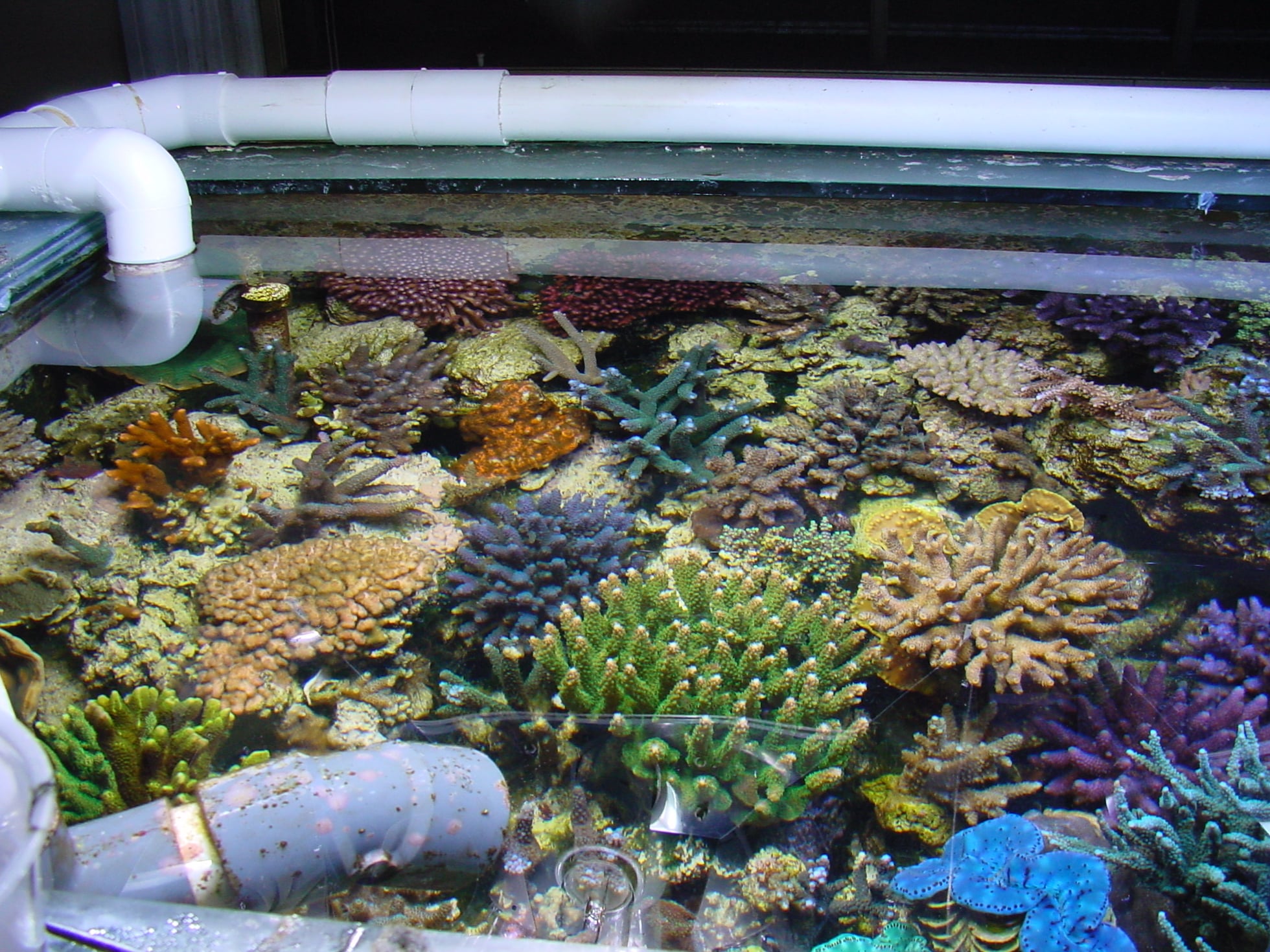
To this end, the hobby has seen lighting go from fluorescent tubes to metal halide lamps, to VHO fluorescent tubes and power compacts to T5 fluorescents and finally to LEDS, with there being combinations of any and all of these lights during this process. A discussion of all of these lights and a comparison will be in a future article. As mentioned above, initially the goal was to try and replicate sunlight, and in this regard, metal halides were used. These were quite effective and were the main lighting source for over two decades and are still used today. While effective, they had the shortcoming of producing significant heat, both from the bulb and reflector as well as the ballast, all of which had to be managed.
Approximately, ten years ago this all changed when LED lighting became the lighting choice of most hobbyists, and this changed the hobby forever. One of the main reasons that these lights changed the hobby is that these lights brought out colors in corals that had previously not been seen. While there is still some debate as to whether these intense colors are “natural” there is no dispute that the colors are indeed spectacular. Couple this along with these units potentially producing less heat than halides and it is easy to understand why LED lighting has become the lighting choice for the majority of reefkeepers.
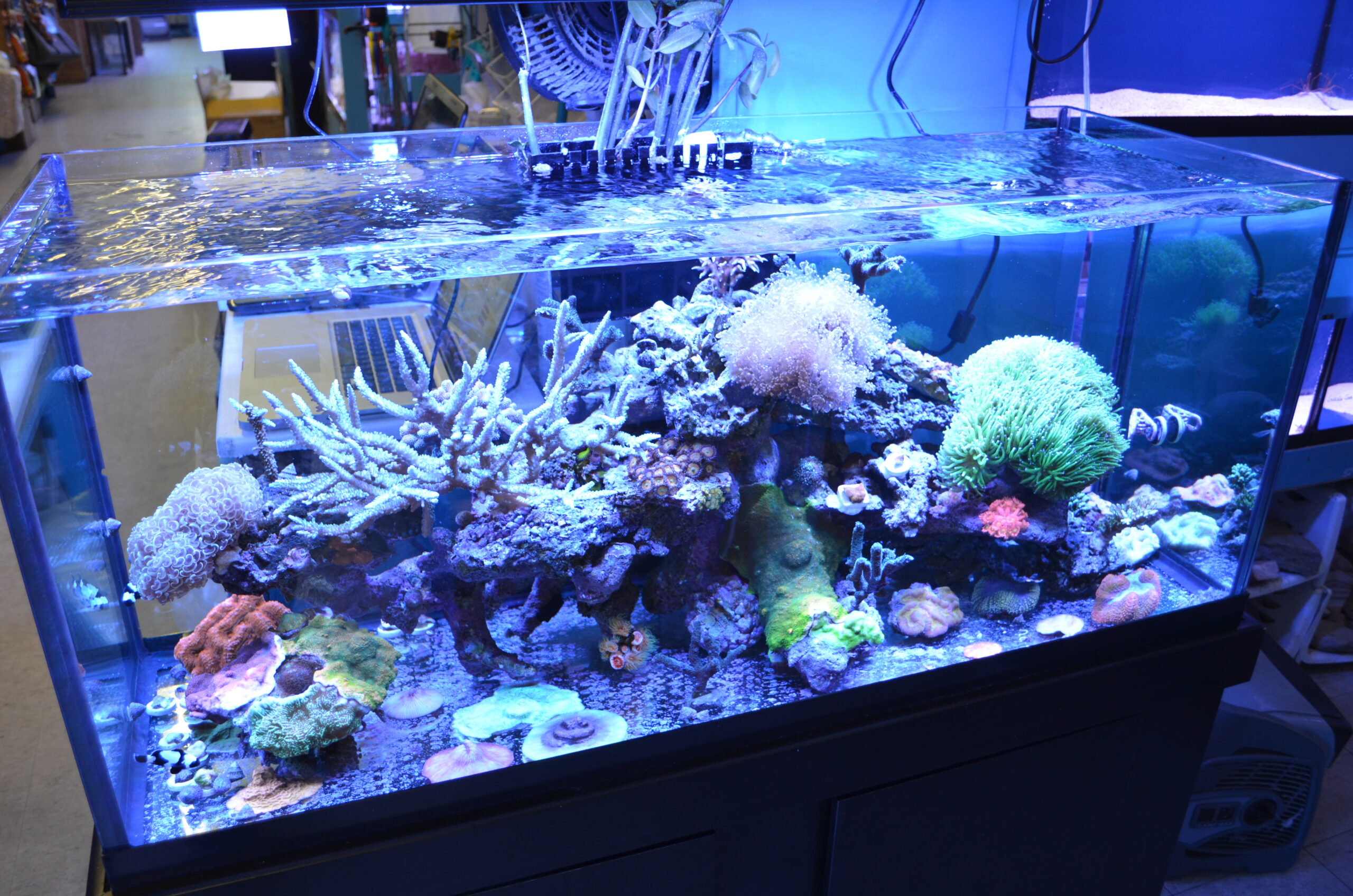
Since LED lighting is the lighting choice for over 90% of hobbyists today, this article on choosing lighting for a new tank will focus on LED lights and will try to answer some of the questions that usually arise regarding these lights. Before continuing, it should be noted that our understanding of lighting and precisely what corals and other invertebrates require has come a long way over the past three decades. The work of Dr. Sanjay Joshi, Dana Riddle, and others has significantly helped in improving how we light our tanks. As a result of their work, we no longer simply blast our corals with as much light as possible for as long as possible. LEDs and the electronics that go with them now allow us to tailor our lighting so that we can precisely target the light our corals need so as to optimize their growth and coloration.
On my own six tanks, I use Ecotech Radion LEDs from generations 3 through 6. On some tanks, I also supplement these lights with ReefBrites, Orpheks, and the New AI Blades. One tank also includes some halides while another receives a significant amount of sunlight. These supplemental lights are not added due to the Radions being inadequate in any way, but they are added due to my desire to experiment and learn and evaluate what these different lights can provide.
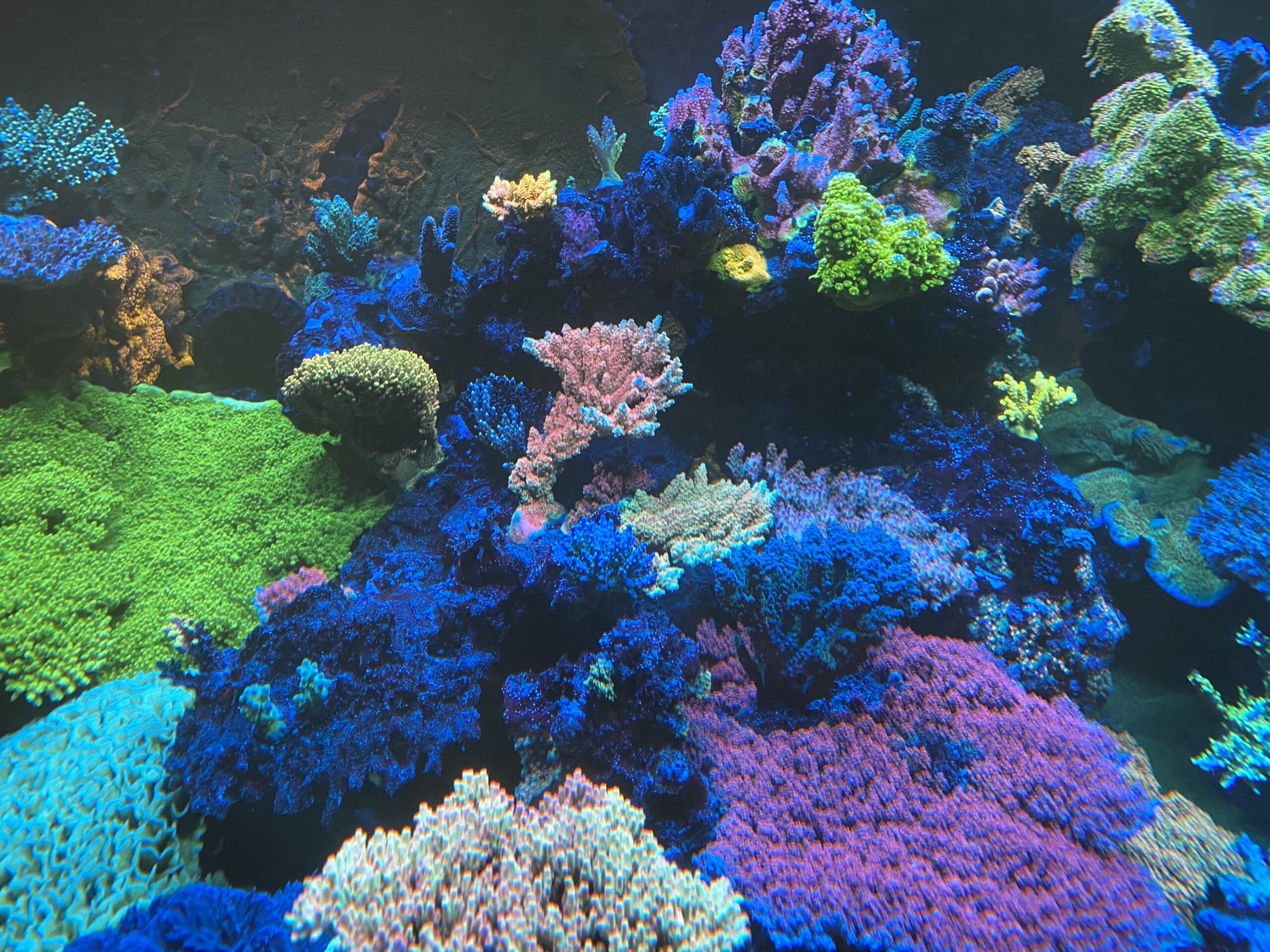
As mentioned above, in the early years of reefing the goal was to “blast” our corals with as much light as possible. Over time we have learned that with many of the corals that we now keep this is unnecessary. Now the goal is to provide on average between 350-450 PAR (photosynthetically active radiation) for the majority of the corals in a tank. PAR is the visible light between the wavelengths of 400-700 nanometers utilized by plants for photosynthesis.
Light toward the lower end of the spectrum is blue/purple in color while light at the higher end is red. Due to the natural filtering activity of seawater, the light at the lower end of the spectrum blue/purple penetrates deeper, and thus corals have developed so that they are better able to utilize light in this spectrum. Manufacturers of LED lighting have used this to their advantage and make many of their lights so that this blue light predominates. However, it should be noted that most LED units allow for the light to be tailored so that even though blue can predominate, cool and warm white, along with red and green light can be introduced so that not only are the colors of the corals optimized, but the lights can be manipulated so that the colors of the tank and corals are pleasant to look at by the viewer.

While I personally like blue light, I find that after a short time, my eyes start to feel strained, so I am not a big fan of the Windex look. Corals can be successfully grown under only blue light, so if this pleases the viewer this can be done. Some do this with the thinking being that only under blue light with the brilliant coloration of the corals be achieved. However, I have seen tanks where all of the colors were run throughout the day, and under these lights, the corals looked more beige and brown, like they do on a reef. But when the whites were lowered and blues maximized the colors on the corals popped indicating that the brilliant coloration is always present but it needs the blue light only in order to bring it out.
When run at full power with all channels on some of these lights can produce PAR as high as 1200 at the top of a tank and even in a deep tank PAR of 200 at the bottom. With this kind of range, care needs to be taken when placing corals so that their light requirements match their placement. When placing newly obtained corals in a tank they should be acclimated so that they gradually become accustomed to the new light. Rarely has a coral been lost due to it getting lower light than it was accustomed to, but many have been burnt due to suddenly being exposed to too strong a light source.
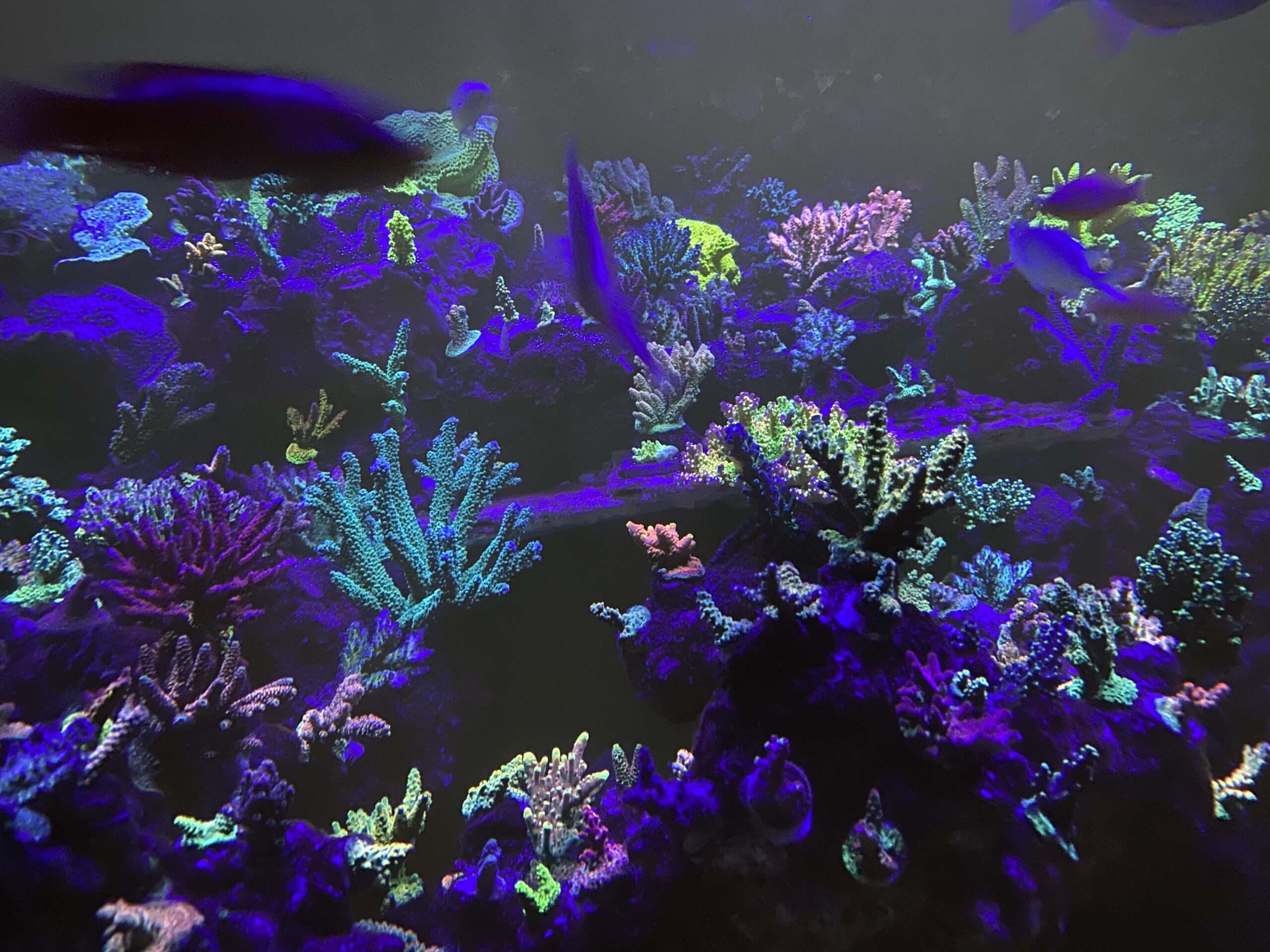
Each LED fixture provides light over a certain surface area. Most manufacturers provide a graph showing how this spread covers a certain area of space. Use this to determine how many fixtures are required to cover the area of your tank. This spread for the most part is not equivalent over the entire spread, with it generally falling off at the edges. This can be used to the coral’s advantage as not all corals require the strongest lighting. Acropora and other light-loving sps will do best where these lights produce the highest PAR. Other corals like lps and deepwater corals can then be placed on the fringes where the light is lower.
When choosing LED lighting for a reef tank, there are now numerous choices, all of which have pros and cons. These range from price, ease of installation, software manipulation to reliability. Each manufacturer has a champion who believes their light is best. Since there are now so many options, I suggest evaluating each over the tanks you want to emulate and speaking to their owners about the light’s positives and negatives. One other aspect that should be considered is if templates are available to run the lights. Most manufacturers now have enough experience with their lights that they have developed templates to optimize various aspects that owners prefer. From my own experience, the ease of adding and manipulating these templates on the lights is another consideration when choosing a light. On my own tanks, I use the standard AB+ template from Ecotech, but I have modified it so that there is a slightly longer blue ramp-up and ramp-down phase so that I can enjoy the blue stimulating the colors at the beginning and end of the day. If templates are not available or if they are difficult to manipulate this can reduce the enjoyment of the lights chosen.
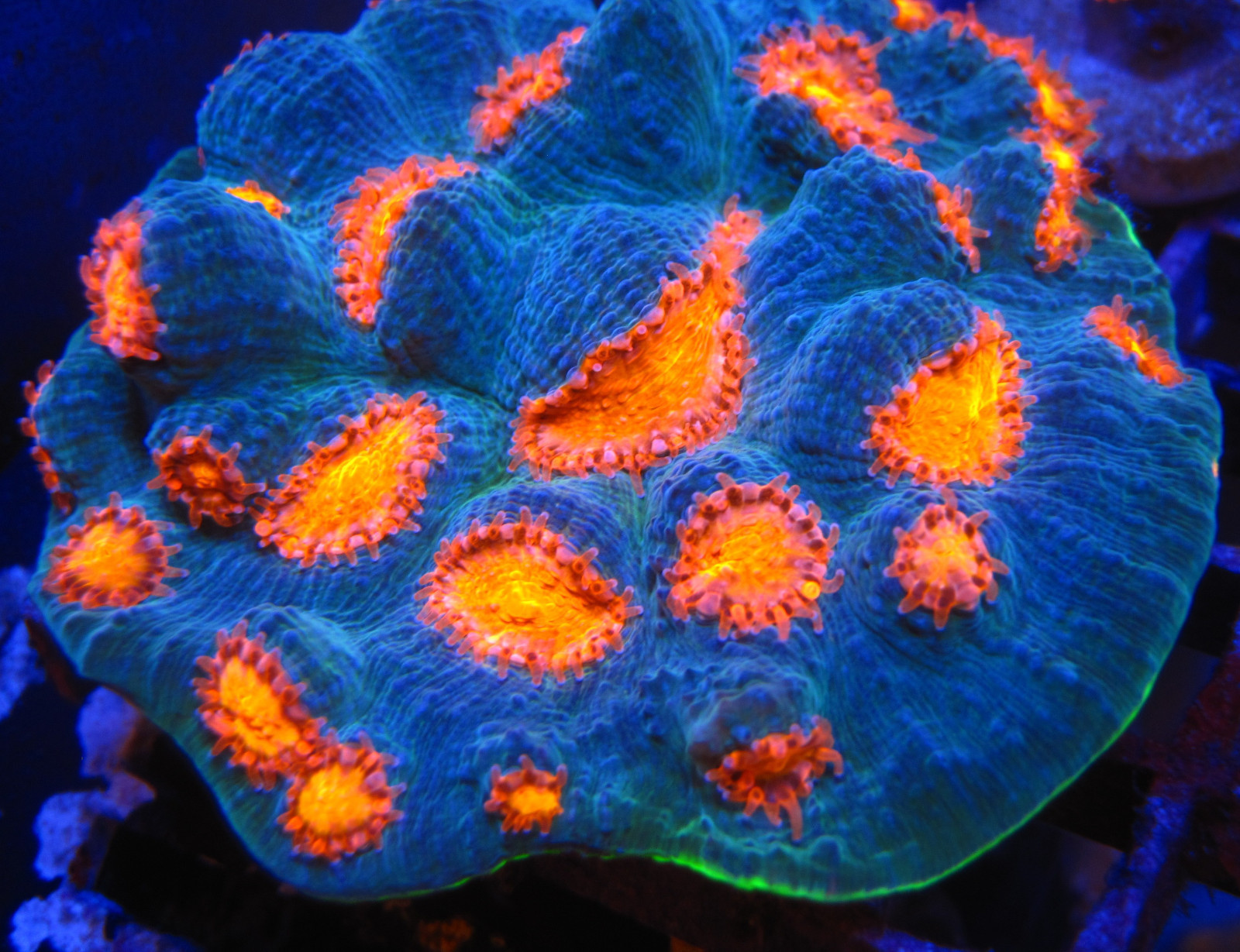
Lighting is one of the most expensive aspects of having a reef tank but one of the most important. For this reason, time should be taken to look at tanks under various lights to aid in the decision. When chosen correctly and run properly the lights can make every coral glow with colors that are rarely seen on a reef. But all of this takes time and even after being chosen the lights may need to be tinkered with to optimize their impact on the corals. As with everything in this hobby, being patient in both selecting the right lights and optimizing their use will pay off in the long run.


